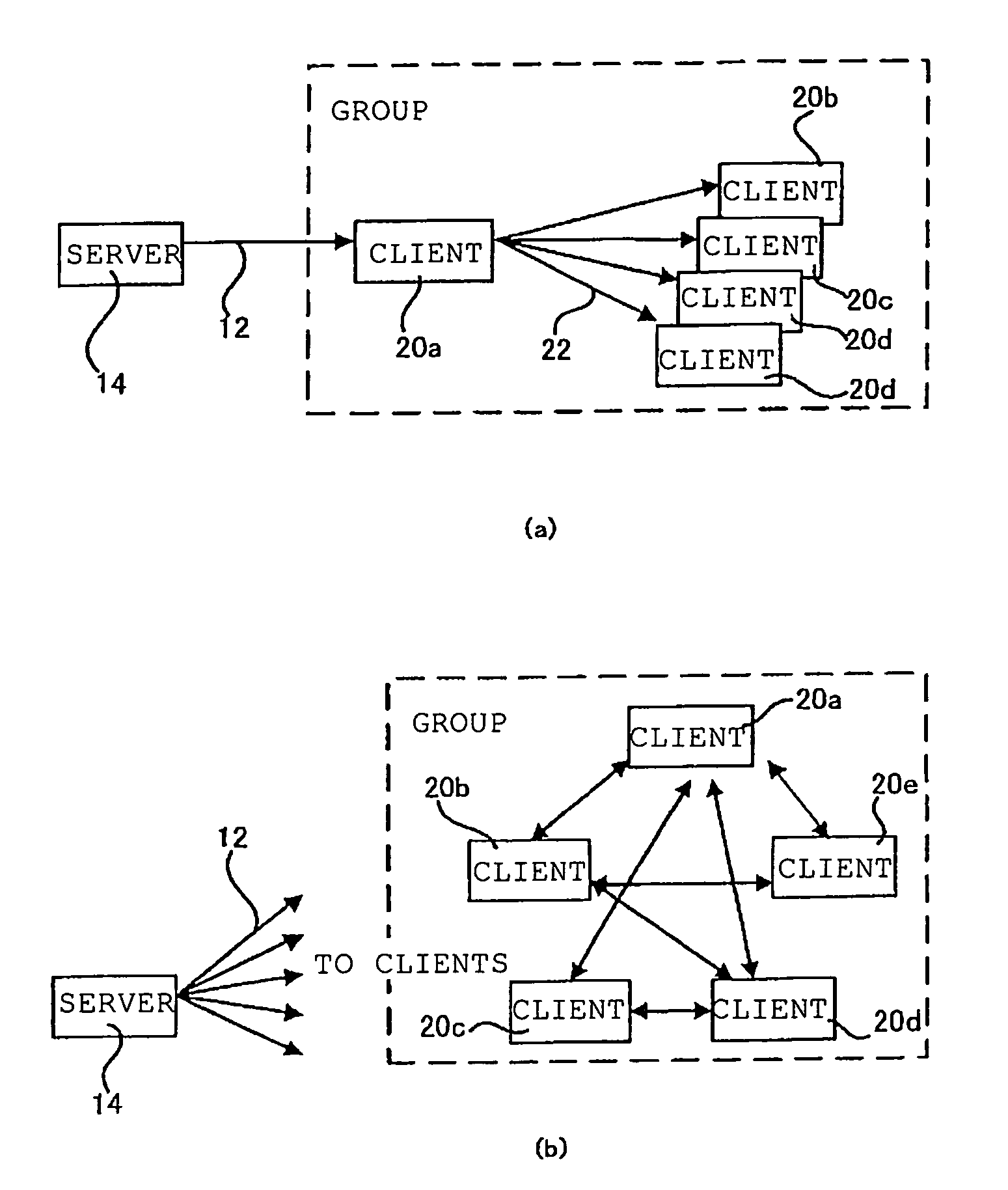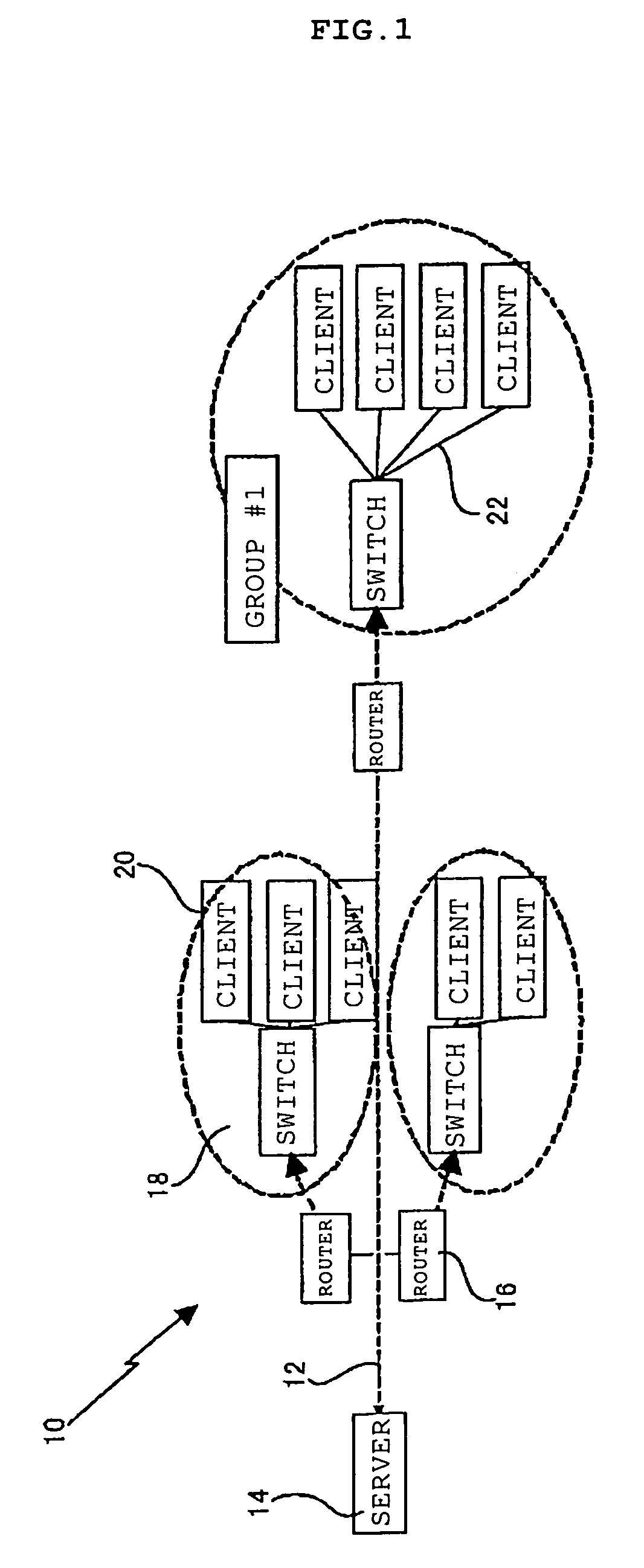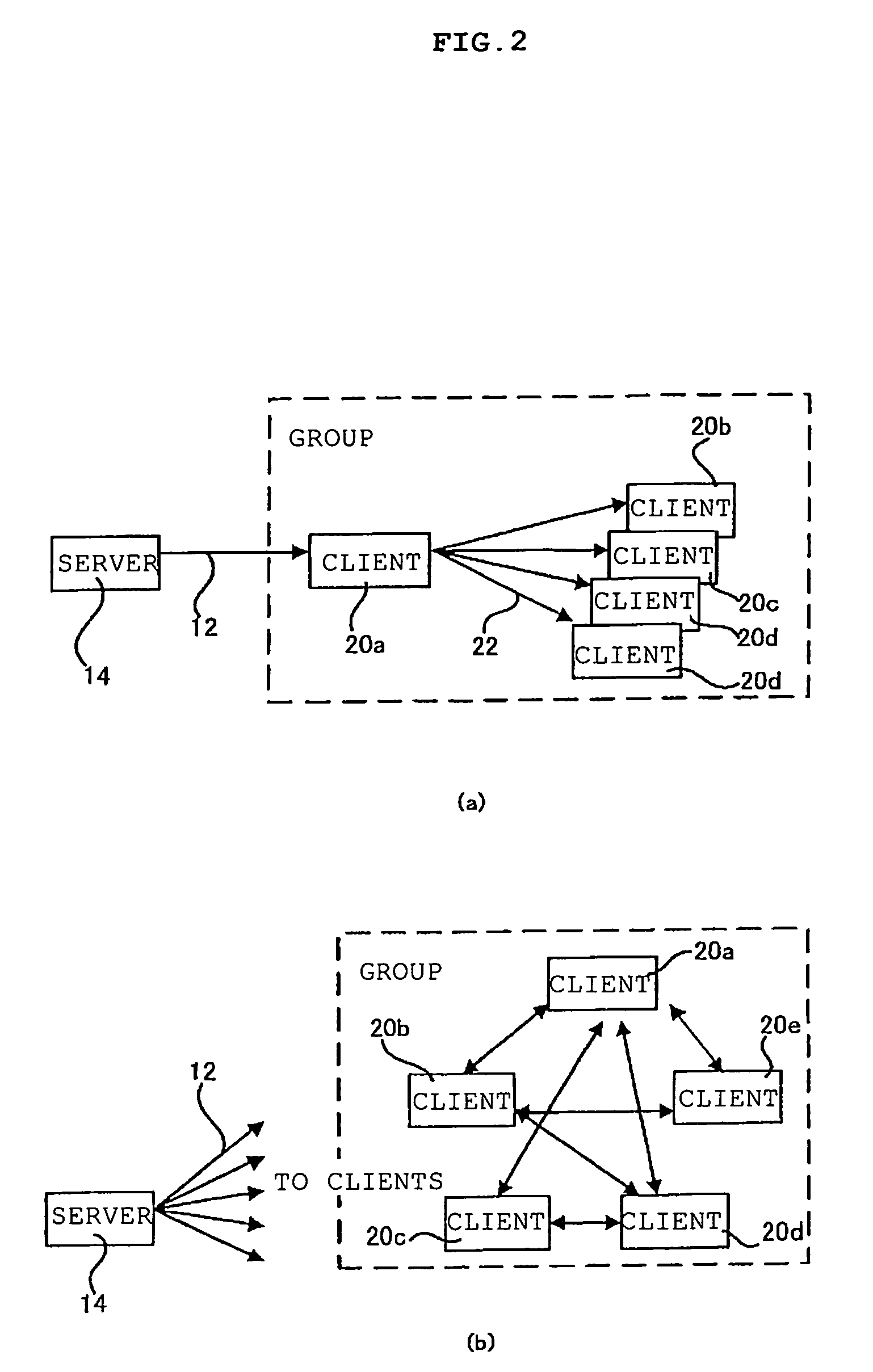Digital content delivery system, digital content delivery method, program for executing the method, computer readable recording medium storing thereon the program, and server and client for it
a digital content and distribution system technology, applied in the field of digital content distribution system and digital content distribution method, can solve the problems of complicated network resources, restricted network scalability, and ip multicast method, and achieve the effect of avoiding the overlap of transmitted packets, enabling communication, and not increasing the cost of the network system unnecessarily
- Summary
- Abstract
- Description
- Claims
- Application Information
AI Technical Summary
Benefits of technology
Problems solved by technology
Method used
Image
Examples
second embodiment
[0221]FIG. 14 is a diagram illustrating the digital contents distribution system of the present invention. The digital contents distribution system illustrated in FIG. 14 is constructed by including the source server 64 for crating the digital contents, the drain server 66 held in the source server 64 and for extracting and holding digital data subjected to the streaming processing, and the groups G#1, G#2 and G#3 connected through the network 12. A construction is adopted, in which a client included in each group is selected as an intermediate node and distribute the digital contents in the group in accordance with the present invention.
[0222]FIG. 15 is a block diagram illustrating constructions of the source server 64 and one client, which are illustrated in FIG. 14. As illustrated in FIG. 15(a), the source server creates streamed digital contents from the created digital data by use of the source decoder 64a and the FEC encoder 64b. The created packets are transmitted to the drai...
third embodiment
[0243]FIG. 24(c) is a diagram illustrating the source packet 92 for use in the present invention. The embodiment illustrated in FIG. 24(c) is made for the case where the destinations of the copy packets are originally obvious and description thereof is not necessary. In this case, the client previously selects the copy destinations from the client list stored in the storage means such as a memory and a hard disk, and selects clients in other groups, which have addresses allocated in a range that is not overlapped with the other clients, thus making it possible to prepare the copy destination list. Moreover, in the case of distributing the copy packets in the group in the embodiment of FIG. 24(c), the distribution thereof can be performed by executing the broadcast communication in the group. Furthermore, in another embodiment, a construction can be previously adopted, in which the client transmits the copy packets to the other clients in the group, and transmits each copy of the rec...
PUM
 Login to View More
Login to View More Abstract
Description
Claims
Application Information
 Login to View More
Login to View More - R&D
- Intellectual Property
- Life Sciences
- Materials
- Tech Scout
- Unparalleled Data Quality
- Higher Quality Content
- 60% Fewer Hallucinations
Browse by: Latest US Patents, China's latest patents, Technical Efficacy Thesaurus, Application Domain, Technology Topic, Popular Technical Reports.
© 2025 PatSnap. All rights reserved.Legal|Privacy policy|Modern Slavery Act Transparency Statement|Sitemap|About US| Contact US: help@patsnap.com



